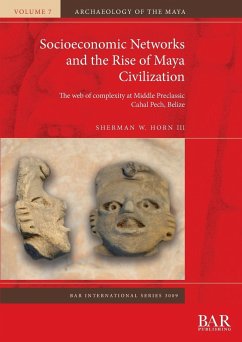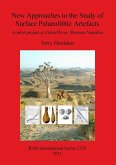This study examines the origins of complex society in the Maya Lowlands during the Middle Preclassic period. Excavations at Cahal Pech - a mid-sized Maya settlement in the Belize River Valley - revealed complex architectural sequences over a 600-year developmental period, which spans the time of the earliest permanent villages in the area and the emergence of institutionalized hierarchy characteristic of later Maya civilization. The author uses spatial analysis to investigate artifact distribution patterns related to architectural change and marshals a diverse dataset to support a network framework for understanding developing complexity. This new theoretical framing expands on studies of long-distance exchange to examine how households and communities could gain advantage by participating in interaction networks, and how the positioning of some entities in networks could have produced socioeconomic inequalities that became entrenched through time.








